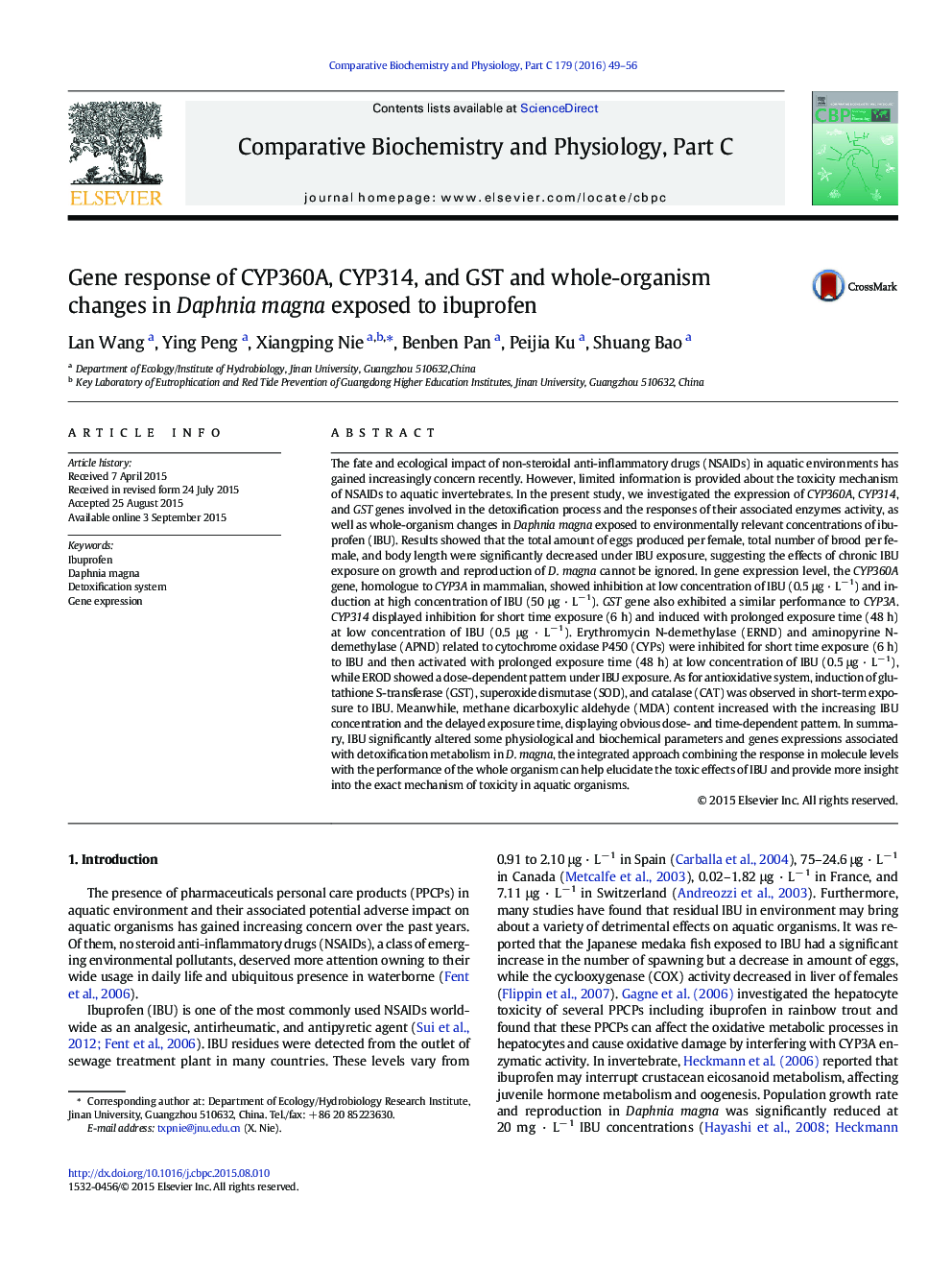| کد مقاله | کد نشریه | سال انتشار | مقاله انگلیسی | نسخه تمام متن |
|---|---|---|---|---|
| 1977165 | 1539280 | 2016 | 8 صفحه PDF | دانلود رایگان |

The fate and ecological impact of non-steroidal anti-inflammatory drugs (NSAIDs) in aquatic environments has gained increasingly concern recently. However, limited information is provided about the toxicity mechanism of NSAIDs to aquatic invertebrates. In the present study, we investigated the expression of CYP360A, CYP314, and GST genes involved in the detoxification process and the responses of their associated enzymes activity, as well as whole-organism changes in Daphnia magna exposed to environmentally relevant concentrations of ibuprofen (IBU). Results showed that the total amount of eggs produced per female, total number of brood per female, and body length were significantly decreased under IBU exposure, suggesting the effects of chronic IBU exposure on growth and reproduction of D. magna cannot be ignored. In gene expression level, the CYP360A gene, homologue to CYP3A in mammalian, showed inhibition at low concentration of IBU (0.5 μg · L− 1) and induction at high concentration of IBU (50 μg · L− 1). GST gene also exhibited a similar performance to CYP3A. CYP314 displayed inhibition for short time exposure (6 h) and induced with prolonged exposure time (48 h) at low concentration of IBU (0.5 μg · L− 1). Erythromycin N-demethylase (ERND) and aminopyrine N-demethylase (APND) related to cytochrome oxidase P450 (CYPs) were inhibited for short time exposure (6 h) to IBU and then activated with prolonged exposure time (48 h) at low concentration of IBU (0.5 μg · L− 1), while EROD showed a dose-dependent pattern under IBU exposure. As for antioxidative system, induction of glutathione S-transferase (GST), superoxide dismutase (SOD), and catalase (CAT) was observed in short-term exposure to IBU. Meanwhile, methane dicarboxylic aldehyde (MDA) content increased with the increasing IBU concentration and the delayed exposure time, displaying obvious dose- and time-dependent pattern. In summary, IBU significantly altered some physiological and biochemical parameters and genes expressions associated with detoxification metabolism in D. magna, the integrated approach combining the response in molecule levels with the performance of the whole organism can help elucidate the toxic effects of IBU and provide more insight into the exact mechanism of toxicity in aquatic organisms.
Journal: Comparative Biochemistry and Physiology Part C: Toxicology & Pharmacology - Volume 179, January 2016, Pages 49–56